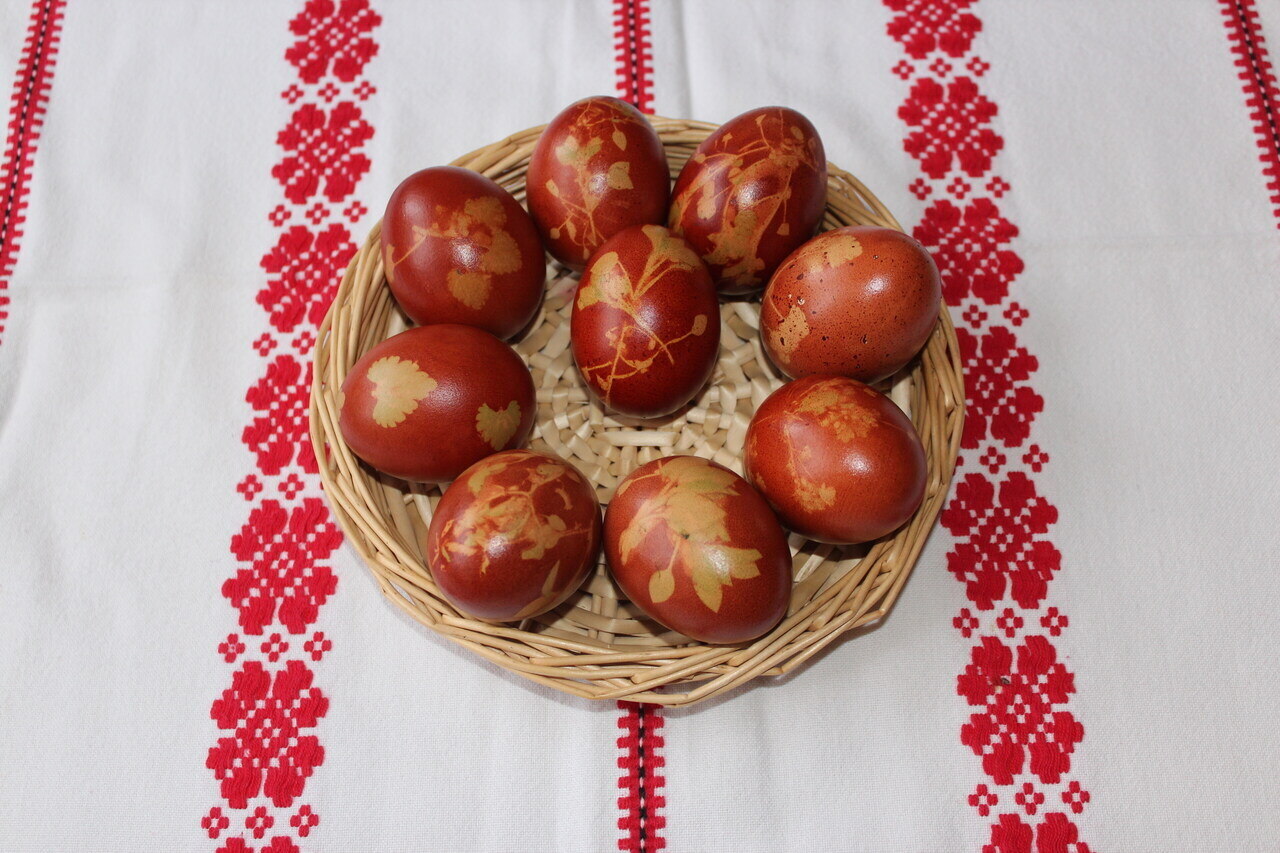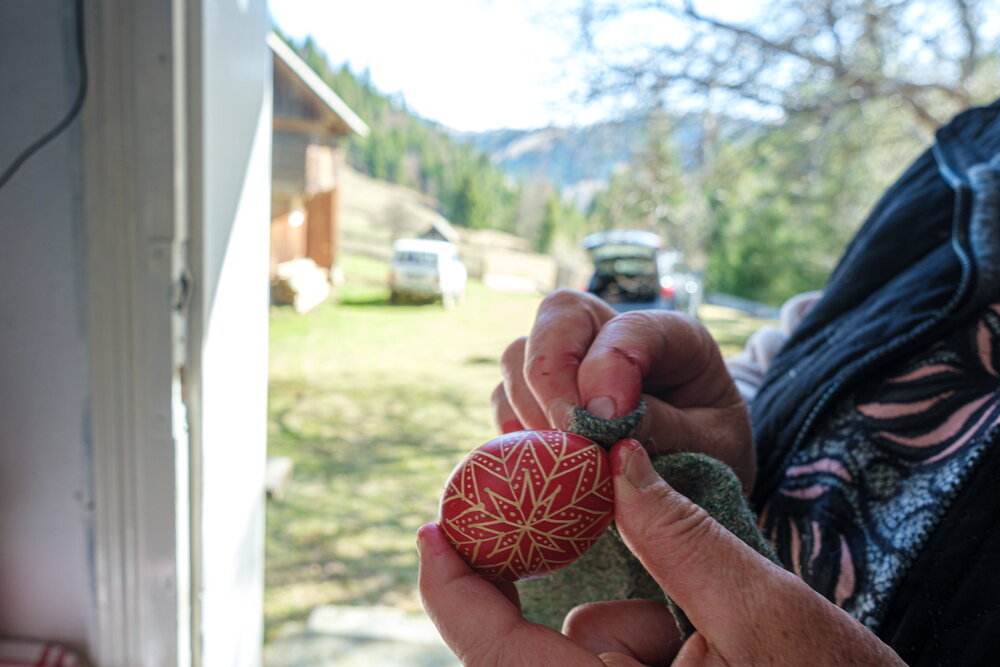Here is how to make traditional Hungarian painted eggs for Easter – PHOTOS

Dyeing and painting eggs are important parts of the traditional Hungarian Easter celebrations. There are several types of egg decorations. In this article, we present three techniques: batik, ‘egg writing’, and scratching.
Batik (batikolás, berzselés)

One of the easiest ways to dye eggs, batik, can be enjoyed by adults and children alike. Below, you can find the five most important steps of batiking eggs, according to szhelyi.blogin.hu.
- Hard boil as many eggs as you want to paint.
- Gather lots of onion skins. Pour water over the onion skins to cover and bring the whole mixture to a boil in a large saucepan.
- Look around the garden (or anywhere else) for parsley leaves, clovers or any small green leaves with a pretty shape that you would like to see on your painted eggs.
- Get a pair of old, worn-out stockings that you no longer want to wear. Cut them into 15 cm pieces. Dampen the leaves, place them on top of the already dry, cooked egg, and wrap the whole thing tightly in the stocking.
- Then carefully place the eggs in the onion-peeled boiling water and leave them to rest until you get the colour you like. Once taken out of the water, you can carefully peel off the stocking.
- Rub it with bacon fat or oil to give it a nice shine.
- Read also: This iconic restaurant in Budapest brings not only food but also poetry to your table – PHOTOS
’Egg writing’ (írókázás)
Another, a bit more difficult but equally beautiful technique to paint eggs for Easter is ‘egg writing’ (írókázás). This how-to recipe is by tarkafirka.blog.hu.
- You will need an egg-writing tool (known as kesice, íróka), which you can easily make yourself or buy for a few hundred forints in hobby or craft shops.
- Next up, you will need beeswax. The best way to do ‘egg writing’ is to use beeswax, which you can buy from beekeepers (or from the market honey seller), candlemakers or on the internet.
- The egg to be decorated is blown out (both the white and the yolk), cleaned, and degreased.
- Put a pot of water on the stove and put a metal bowl in it. Melt the wax in the bowl, keeping the water boiling underneath while you work (water needs to be refilled from time to time) so that the wax is always in a molten, easily flowing state.
- Hold the handle of the writing tool like a pencil, dip the beak into the fully melted, hot beeswax, and draw the lines, holding it perpendicular to the egg surface. Draw the vertical first, then the horizontal dividing circles and the auxiliary lines, followed by the motifs. You can draw any pattern you like on the egg.
- When it is done, let it dry.
- Try to carefully cut and scrape off the wax layer with a sharp knife. Melt the residue by turning it over a flame (such as a burning candle), and then soak it up with a paper towel. When melting the wax, do not hold the egg too close to the flame, as it will burn.
Scratching (karcolás)
One of the easiest ways to paint Easter eggs is by scratching. First, you have to paint the eggs. The preparation steps were provided by agroinform.hu.

MTI/Veres Nándor
- Paint the eggs with onion skins in the way it was described above, except that this time, do not put leaves on them and do not put them in stockings.
- After they are done, let them cool.
- Use a sharp knife to carve patterns that you like on the already painted eggs.
- That is it, well done!
We hope you could find at least one technique that you can try this Easter. Have fun, and Happy Holidays!
Source: agroinform.hu, tarkafirka.blog.hu, szhelyi.blogin.hu








